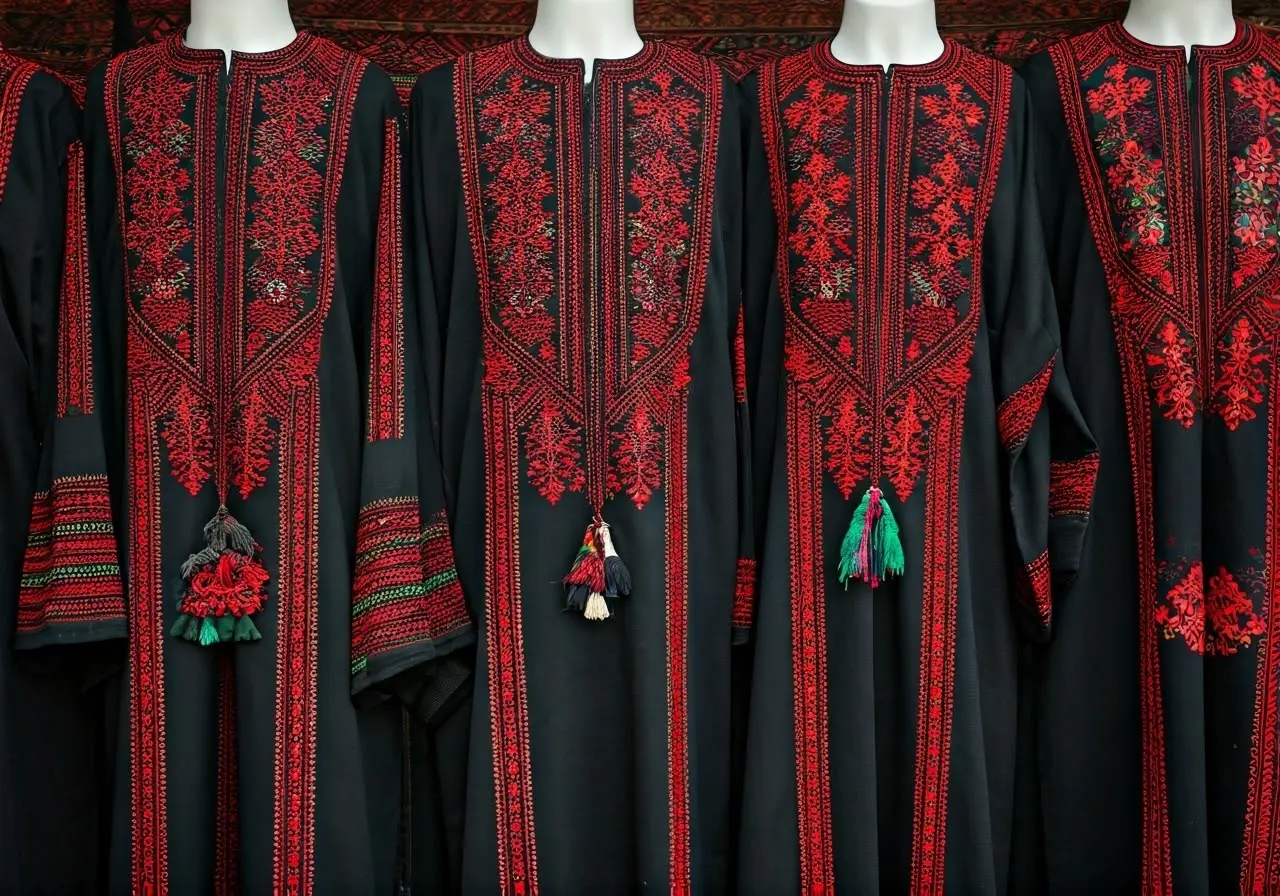Traditional costumes are more than just fabrics sewn together. They are threads that weave the rich tapestry of culture and history, embodying the essence of a community and nation. In Palestine, traditional attire plays a pivotal role in keeping the heritage alive. This blog delves into the significance of these costumes and how they contribute to preserving Palestinian culture.
The Historical Significance of Palestinian Costumes
Palestinian traditional costumes have been worn for centuries, each piece telling a story of the region’s diverse history. They reflect influences from ancient civilizations, neighboring cultures, and local traditions, showcasing a fusion that is uniquely Palestinian.
Historically, the national women’s outfit of Palestine was a complex ensemble of garments, including the ‘thob’, a traditional dress, and various jackets like the ‘taqsireh’ and ‘jubbeh’. These garments evolved over time, incorporating influences from various regions and cultures. For men, the traditional costume included a ‘qamis’, ‘sirwal’, and ‘abaya’, garments that signified not only fashion but also status and origin Traditional Clothing of Palestine.
Regional diversity added to the richness of traditional attire. For instance, Bedouin women adorned themselves in voluminous thobes often styled differently based on their geographic origin. These thobes featured vibrant colors and intricate embroidery, symbolizing their rich heritage Traditional Clothing of Palestine.
The Intricate Designs and Symbolism
The intricate designs found in Palestinian costumes are not merely decorative; they are symbols of heritage. From rich embroidery to vibrant colors, each element carries a meaning, representing nature, beliefs, and societal roles. These symbols have been passed down through generations, preserving tales of ancestry.
Embroidery, known as ‘tatriz’, is central to Palestinian clothing, offering insights into the wearer’s locality, status, and sometimes marital status. For instance, scarves donned by women were often heavily embroidered, each stitch narrating a part of the community’s story. The patterns and motifs in these textiles often symbolized nature or life events, containing deep-rooted meanings that transcend aesthetic appeal.
Jewelry also played a significant role in completing the traditional attire of Palestinian women. Often made from silver and sometimes gold, these pieces were not just accessories but carried cultural and sometimes talismanic significance. They were skillfully crafted with local techniques or imported from regions like Egypt and Syria, exemplifying the intricate artistry inherent in Palestinian culture Traditional Clothing of Palestine.
Costumes as a Medium of Cultural Expression
Wearing traditional costumes is an expression of cultural pride and identity. They are worn on special occasions, such as weddings and festivals, connecting individuals to their roots. This expression allows Palestinians to visually narrate their story to the world.
Palestinian traditional costumes are a vibrant expression of cultural identity. They serve as a visual representation of the community’s history, creatively encapsulating past narratives in fabric and thread. Through festivals and ceremonies, these garments come alive, uniting generations by a shared admiration for their ancestors’ creativity and resilience.
Despite modern influences, many Palestinians continue to value their traditional wardrobe for its cultural significance. This enduring respect underscores a collective commitment to heritage preservation, visible even in contemporary settings where fashion combines traditional elements with modern design. Explore these unbeatable deals on modern and traditional embroidery fashion at Palestinian Elegance.
Efforts to Preserve This Living Heritage
Various initiatives and organizations are working tirelessly to preserve Palestinian traditional costumes. From museums showcasing these garments to designers incorporating traditional elements into modern fashion, these efforts ensure that the rich cultural legacy remains vibrant and accessible to future generations.
Innovative approaches are also seen in how contemporary designers incorporate tatriz into their creations. This method not only preserves these skills but also brings Palestinian culture to the fore in global fashion trends, blending the historic with the new. Explore now and transform your home with the exquisite home decor collection at Palestinian Elegance, a testament to traditional charm and modern style.
Communities and cultural ambassadors are actively hosting workshops to educate the younger generations about the importance and craft of traditional costume making. These educational programs help foster a sense of pride and understanding among the youth, ensuring that the cultural heritage is passed down and cherished.
The Unbroken Thread of Tradition
Preserving Palestinian traditional costumes is more than a nod to aesthetic appreciation; it’s a respect for history and cultural identity. These garments serve as a reminder of the struggles, resilience, and creativity of the Palestinian people. By cherishing these costumes, future generations can appreciate and carry forward their heritage, strengthening their sense of identity and belonging.



